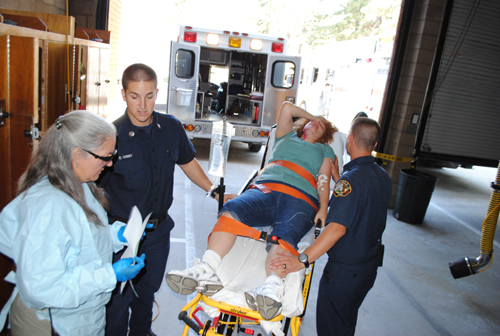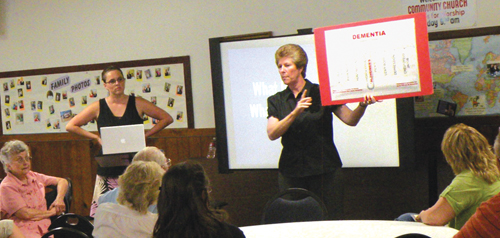Changes coming to WNKI
The Mile High Radio Club plans several changes as it gradually assumes responsibility for operating WNKI, 1610 AM — the local emergency radio station. At the end of 2014, the Idyllwild Fire Protection District agreed to transfer WNKI operations to MHRC, which has begun implementing improvements.
An important step is to expand the coverage area for the station’s signal. While some initial work has been done, Bill Tell, MHRC president, and Tom Pierce, MHRC, have prepared a grant application seeking funds to complete this work sooner. Their goal is to enable WNKI’s signal to be received from Poppet Flats in the north to Pinyon Pines in the south.
An important upgrade will be new software to control the radio messages and signals, Tell said. Also, some hardware will be added. Both of these will improve the transmission of the messages.
New software will also enhance the club’s ability to control the transmission and messages remotely. “We won’t have to physically go to the station. It will all be internal connections,” Tell said.
“Our strategic plan has a total of six phases. Phases 1 and 2 will take care of the primary site at IFPD along with test,” Tell added.
Not all of the hardware has to be brand new. Some used hardware is still state-of-the-art, but the perks are not necessary for an emergency station, both stressed.
“We can’t be afraid of used equipment. There’s almost no difference in performance. Its life expectancy is still about 30 years, so almost no down side,” Pierce said, explaining how frugal the station upgrade will be.
They anticipate an efficient take over of the station operations and maintenance.
The plan for the ribbon network has already been discussed and tentatively approved by the county. “We just have to ensure our signal produces no interference for them,” Pierce said.
The ribbon will be a series of repeaters to broadcast the signal without needing greater power from the transmission site in Idyllwild. This is how MHRC will be able to achieve coverage of the mountain from one end to other, Tell said.
“It’s geographically challenging, but we’ll implement it in a phased process,” Tell said. “Each location will be tested. It won’t be one powerful station, rather a distributed station.” A site with all new equipment, antenna, cables and hardware will cost about $20,000. “But the like-new repeater-ribbon sites will come in at just under $11,000 per site with a 12-month warranty,” Tell said in an email.
Further in the future may be plans for all digital transmission and two-way radio. “This would enable the use of documents or text messages through the amateur radio in crisis,” Tell said. “And the antenna needs a little work for improvement,” Pierce added.
The grant will be submitted to The Community Foundation of Riverside and San Bernardino Counties. The amount of the award will determine how quickly the various phases — there are six — can be implemented, according to Tell. “It’s coming together; now all we need is the funding,” Tell said. “Yes, we’ll build a WNKI system that will require real radio skills,” added Pierce.




